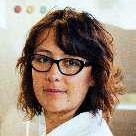Multi-Sensor Systems for Food and Agricultural Applications
A special issue of Sensors (ISSN 1424-8220). This special issue belongs to the section "Smart Agriculture".
Deadline for manuscript submissions: closed (30 May 2023) | Viewed by 17864
Special Issue Editors
Interests: electrochemical sensors; sensors based on silicon and derived materials; microanalytical systems; sensor’s applications in food, environment and clinical analysis
Special Issues, Collections and Topics in MDPI journals
2. CEITEC, Brno University of Technology, Brno, Czech Republic
Interests: sensors; micro/nanofabrication; functional nanomaterials; chemical vapor deposition
Special Issues, Collections and Topics in MDPI journals
Interests: electrochemical sensors; chemically modified with electrocatalytic materials and nanomaterials; biomimetic biosensors dedicated to the detection of components of foods; antioxidants; organic acids; fatty acids, etc; electronic tongues based on nanostructured biosensors for the assessment of the organoleptic characteristics of wines and milks
Special Issue Information
Dear Colleagues,
The growing interest in high-quality and sustainable production in agriculture and the food industry has promoted the development of more automated and accurate analytical systems. Additionally, optimized process control is essential to address safety rules and maintain the commercial viability of an end product. This involves, among other things, a rapid assessment of the (bio) chemical and physical properties of raw materials, process flows and end products.
In this context, the use of multi-sensor analysis systems combined with new chemometric tools or machine learning techniques can provide great advantages. These systems can offer global information on the system, recognizing quantitative and qualitative composition, and provide a warning in the case of deviations or events, for example, in line production systems.
This Special Issue will provide a unique opportunity for researchers to publish their original achievements related to the design, characterization and validation of multi-sensor systems for food and agricultural applications.
This Special Issue welcomes both original research and review articles.
Dr. Cecilia Jimenez
Dr. Stella Vallejos Vargas
Prof. Dr. Maria Luz Rodriguez-Mendez
Guest Editors
If you want to learn more information or need any advice, you can contact the Special Issue Editor Bell Ding via <Bell.ding@mdpi.com>
Manuscript Submission Information
Manuscripts should be submitted online at www.mdpi.com by registering and logging in to this website. Once you are registered, click here to go to the submission form. Manuscripts can be submitted until the deadline. All submissions that pass pre-check are peer-reviewed. Accepted papers will be published continuously in the journal (as soon as accepted) and will be listed together on the special issue website. Research articles, review articles as well as short communications are invited. For planned papers, a title and short abstract (about 100 words) can be sent to the Editorial Office for announcement on this website.
Submitted manuscripts should not have been published previously, nor be under consideration for publication elsewhere (except conference proceedings papers). All manuscripts are thoroughly refereed through a single-blind peer-review process. A guide for authors and other relevant information for submission of manuscripts is available on the Instructions for Authors page. Sensors is an international peer-reviewed open access semimonthly journal published by MDPI.
Please visit the Instructions for Authors page before submitting a manuscript. The Article Processing Charge (APC) for publication in this open access journal is 2600 CHF (Swiss Francs). Submitted papers should be well formatted and use good English. Authors may use MDPI's English editing service prior to publication or during author revisions.
Keywords
- (bio) sensors
- multi-sensor systems
- chemometrics
- machine learning tools
- neural networks
- food analysis and control
- agricultural control








